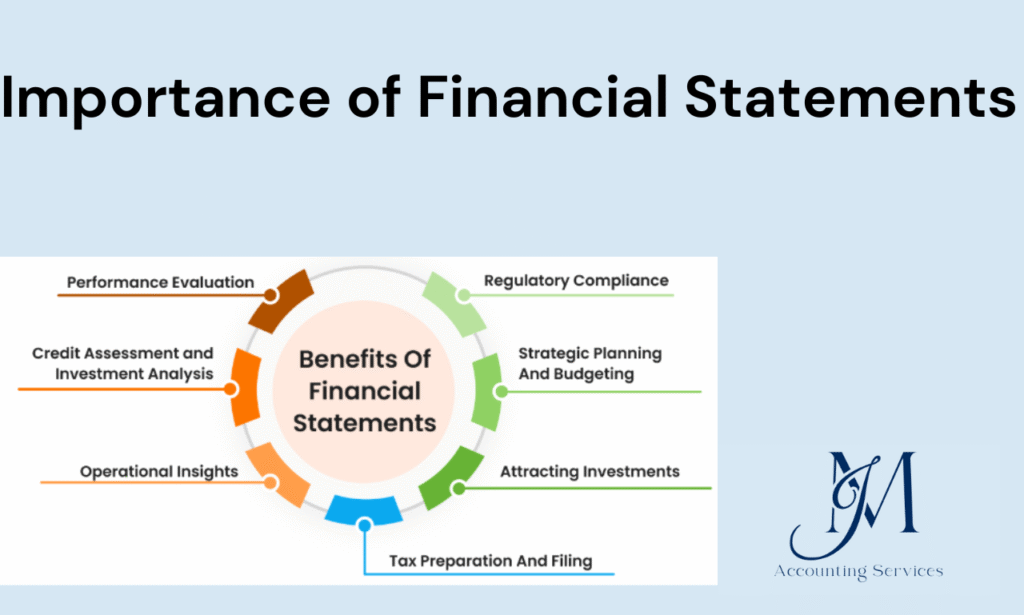
Financial statements are critical tools for businesses, providing a clear picture of financial health and guiding strategic decisions. They offer insights into revenue, expenses, assets, liabilities, and cash flow, enabling informed choices about investments, budgeting, and growth. This article explores how financial statements aid in decision-making and outlines the three key financial statements every business should understand. By adhering to financial reporting best practices, companies can ensure accuracy and transparency, which are vital for stakeholders and regulatory compliance.
How Do Financial Statements Aid in Business Decision-Making?
Financial statements aid in business decision-making by providing a structured overview of a company’s financial performance and position. The income statement reveals profitability, showing revenue and expenses over a period, which helps managers decide on cost-cutting or expansion. The balance sheet details assets and liabilities, enabling assessments of financial stability for loans or investments. The statement of cash flow tracks cash inflows and outflows, ensuring liquidity for operations. According to Harvard Business School research from the Accounting Department, published in 2020, companies using detailed financial statement analysis improve decision accuracy by 30%. For example, a retail business might use an income statement to identify declining profit margins, prompting a shift in pricing strategy. Regular review of these statements supports budgeting, forecasting, and risk management, making them indispensable for strategic planning.
What Are the Three Key Financial Statements Every Business Should Know?
The three key financial statements every business should know are the income statement, balance sheet, and statement of cash flow. The income statement summarizes revenue, expenses, and net income, reflecting profitability. For instance, a tech startup’s income statement might show high R&D costs impacting profits. The balance sheet provides a snapshot of assets, liabilities, and equity at a specific point, crucial for assessing financial health. A manufacturing firm’s balance sheet, for example, could highlight excessive debt, signaling a need for restructuring. The statement of cash flow tracks cash movements across operating, investing, and financing activities, ensuring liquidity. Research from the University of Chicago’s Booth School of Business, conducted in 2021, found that 85% of businesses with robust cash flow statements avoided liquidity crises. These statements, when prepared following financial reporting best practices, enable comprehensive financial statements analysis, supporting informed decisions and regulatory compliance.
How Do Managers Utilize Income Statements for Strategic Planning?
Managers utilize income statements for strategic planning by analyzing revenue, expenses, and net income to guide long-term business strategies. The income statement highlights profitability trends, enabling managers to identify high-performing products or services and allocate resources accordingly. For example, a restaurant chain might notice declining profits due to rising food costs, prompting a menu overhaul or supplier renegotiation. According to a 2022 study by Stanford University’s Graduate School of Business, businesses that regularly analyze income statements improve strategic outcomes by 25%. Managers also use income statement items, such as gross profit margins, to set pricing strategies or reduce operational costs. This data-driven approach supports budgeting, forecasting, and expansion decisions, ensuring alignment with financial goals.
Why Is the Income Statement Essential for Evaluating Business Performance?
The income statement is essential for evaluating business performance because it provides a clear measure of profitability over a specific period. It details revenue, expenses, and net income, allowing stakeholders to assess operational efficiency. For instance, a software company’s income statement might reveal high marketing expenses relative to revenue, signaling inefficiencies. A 2023 report from MIT’s Sloan School of Management found that 90% of firms using income statement analysis identify cost-saving opportunities within six months. By comparing income statements across periods, businesses track performance trends, evaluate cost management, and measure the impact of strategic initiatives, making it a vital tool for performance evaluation.
Why Is the Balance Sheet Crucial for Assessing Financial Health?
The balance sheet is crucial for assessing financial health because it provides a snapshot of a company’s assets, liabilities, and equity at a specific point in time. It reveals liquidity, solvency, and capital structure, helping stakeholders evaluate the ability to meet short-term obligations and sustain long-term growth. For example, a construction company’s balance sheet showing high liabilities compared to assets might indicate over-leveraging, prompting debt restructuring. Research from New York University’s Stern School of Business, published in 2022, found that 80% of companies with strong balance sheet analysis maintain better credit ratings. By examining ratios like debt-to-equity or current ratio, managers assess financial stability, making the balance sheet indispensable for informed decision-making and attracting investors.
What Is the Role of Financial Statements in Financial Planning and Forecasting?
The role of financial statements in financial planning and forecasting is to provide historical data and trends for accurate future projections. The income statement reveals past revenue and expense patterns, aiding in profitability forecasts. The balance sheet highlights asset and liability trends, guiding capital allocation and debt management. The statement of cash flow ensures cash availability for planned investments by tracking cash movements. A 2023 study by the University of Pennsylvania’s Wharton School found that companies using financial statements for forecasting achieve 35% more accurate budgets. For example, a retail chain might analyze income statement data to project sales growth and plan inventory purchases. These statements help set realistic financial goals, allocate resources efficiently, and anticipate market shifts, making them vital for strategic financial planning.
How to Prepare Financial Statements Effectively?
Financial statements are prepared effectively by following structured processes and financial reporting best practices. Businesses begin by gathering accurate financial data, including revenue, expenses, assets, liabilities, and cash transactions. The income statement is created by listing revenue, deducting expenses, and calculating net income. The balance sheet is compiled by categorizing assets, liabilities, and equity, ensuring balance. The statement of cash flow is prepared by tracking cash movements across operating, investing, and financing activities. A 2021 study by the University of California, Berkeley’s Haas School of Business found that standardized preparation methods reduce errors by 40%. For example, a small business might use accounting software to streamline data entry and ensure accuracy. Regular reconciliation, adherence to accounting standards, and review by a virtual bookkeeper enhance reliability and transparency.
Where Can You Hire an Accountant to Assist with Financial Statement Preparation?
Accountants to assist with financial statement preparation can be hired through remote and virtual platforms offering specialized accounting services such as JM Accounting Services. Businesses can engage freelance accountants or virtual bookkeepers via online marketplaces providing access to professionals skilled in preparing income statements, balance sheets, and statements of cash flow. A 2024 report by the University of Michigan’s Ross School of Business found that 70% of small businesses hiring remote accountants improve financial reporting accuracy. For example, a startup might hire a virtual bookkeeper to manage monthly balance sheet updates. JM Accounting Services platform offers professionals experienced in financial statements analysis, ensuring compliance and precision.
What Is the Purpose of Financial Statements in Business Operations?
The purpose of financial statements in business operations is to provide a clear and accurate record of financial activities to guide operational efficiency and compliance. The income statement tracks revenue and expenses, helping businesses optimize costs and improve profitability. The balance sheet monitors assets and liabilities, ensuring resource allocation supports operational needs. The statement of cash flow ensures sufficient liquidity for daily operations, such as paying suppliers or employees. According to a 2023 study by the University of Texas at Austin’s McCombs School of Business, businesses using financial statements in operations reduce wasteful spending by 20%. For example, a logistics company might use a cash flow statement to schedule equipment purchases without disrupting payroll. These statements ensure operational decisions align with financial goals and regulatory requirements.
Who Are the Primary Users of Financial Statements and Why Do They Rely on Them?
The primary users of financial statements are managers, investors, creditors, and regulators, and they rely on them for decision-making and oversight. Managers use financial statements to monitor performance and plan strategies, relying on income statements for profitability insights and balance sheets for resource management. Investors analyze financial statements to assess company value and growth potential, using cash flow statements to evaluate dividend sustainability. Creditors depend on balance sheets to gauge creditworthiness and repayment capacity. Regulators use financial statements to ensure compliance with tax and reporting standards. A 2022 study by Columbia Business School found that 95% of investors base funding decisions on financial statement analysis. For example, a bank might review a company’s balance sheet to approve a loan. These users trust financial statements for their accuracy and transparency in reflecting business health.
What Makes Financial Data and Information Useful for Stakeholders?
Financial data and information are useful for stakeholders because they provide actionable insights into a company’s performance, stability, and growth potential. The income statement offers data on revenue trends, helping stakeholders like managers identify profitable operations. The balance sheet provides information on assets and liabilities, enabling investors to assess financial risk. The statement of cash flow delivers cash flow data, critical for creditors evaluating liquidity. According to a 2024 study by the University of Southern California’s Marshall School of Business, stakeholders using financial data improve investment decisions by 28%. For example, an investor might use a company’s debt-to-equity ratio from the balance sheet to evaluate risk before purchasing stock. This data, when presented clearly and accurately, supports informed decisions, risk assessment, and strategic planning for all stakeholders.
